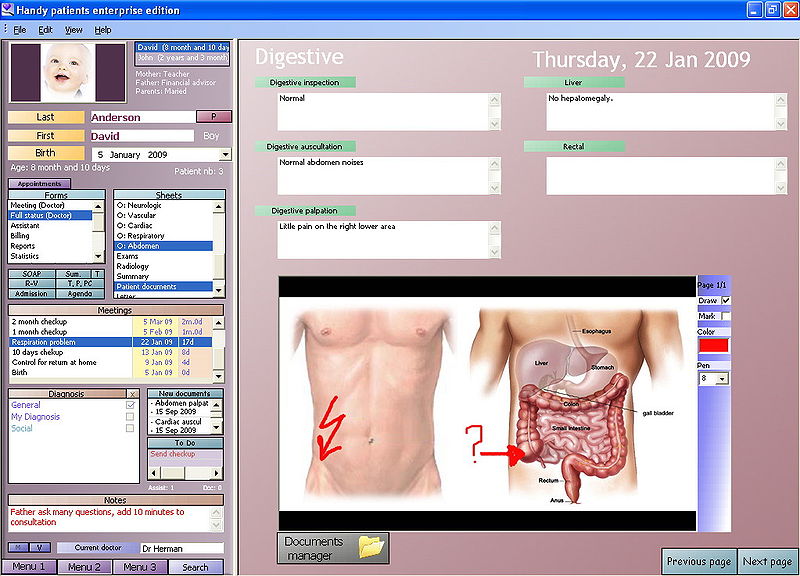By Walter Sorochan Emeritus Professor San Diego State University
Posted January 20, 2019; updated October 11, 2021. Disclaimer
Medical doctors and hospitals before 2000 kept patient records on paper in patient files. A patient's record could be found by last name in the filing cabinet. But transferring a patient's medical history from a doctor's office to a hospital or another medical doctor was a slow and inefficient system. Such record keeping became streamlined by Electronic Medical Record [EMR], also referred to as Electronic Health record and Electronic Patient Record. Paper records became computerized patient data. This has resulted in increased efficiency and reduction of errors.
Below is an example of an EMR:

An electronic health record [EHR or EPR, EMR] is a digital version of a patient’s paper chart that doctors used to keep in their offices. Electronic Health records [EHRs] are real-time, patient-centered records that make information available instantly and securely to authorized users. While an EHR does contain the medical and treatment histories of patients, an EHR system is built to go beyond standard clinical data collected in a provider’s office and can be inclusive of a broader view of a patient’s care. EHRs can: HealthIT: EHR 2018
 Contain a patient’s medical history, diagnoses, medications, treatment
plans, immunization dates, allergies, radiology images, and laboratory and
test results
Contain a patient’s medical history, diagnoses, medications, treatment
plans, immunization dates, allergies, radiology images, and laboratory and
test results Allow access to evidence-based tools that providers can use to make
decisions about a patient’s care
Allow access to evidence-based tools that providers can use to make
decisions about a patient’s care Automate and streamline provider workflow
Automate and streamline provider workflow
One of the key features of an EHR is that health information can be created and managed by authorized providers in a digital format capable of being shared with other providers across more than one health care organization. EHRs are built to share information with other health care providers and organizations – such as laboratories, specialists, medical imaging facilities, pharmacies, emergency facilities, and school and workplace clinics – so they contain information from all clinicians involved in a patient’s care.
Although the computer technology for EHR has been around since 1995, it has been implemented in about 50 % of private medical offices as of 2018 and in most other health care organizations and systems.
References:
Kaften, Cheryl, "U.S. Electronic Medical Records Market is Vigorous, up 18 Percent Annually Through 2015," HealthTech, June 30, 2011. Kaften: Electronic Medical Record 2001
HealthIT.gov, "What is an electronic health record(EHR)?" March 21, 2018. HealthIT: EHR 2018
Wikipedia, "Electronic health record.Wiki: Electronic health record